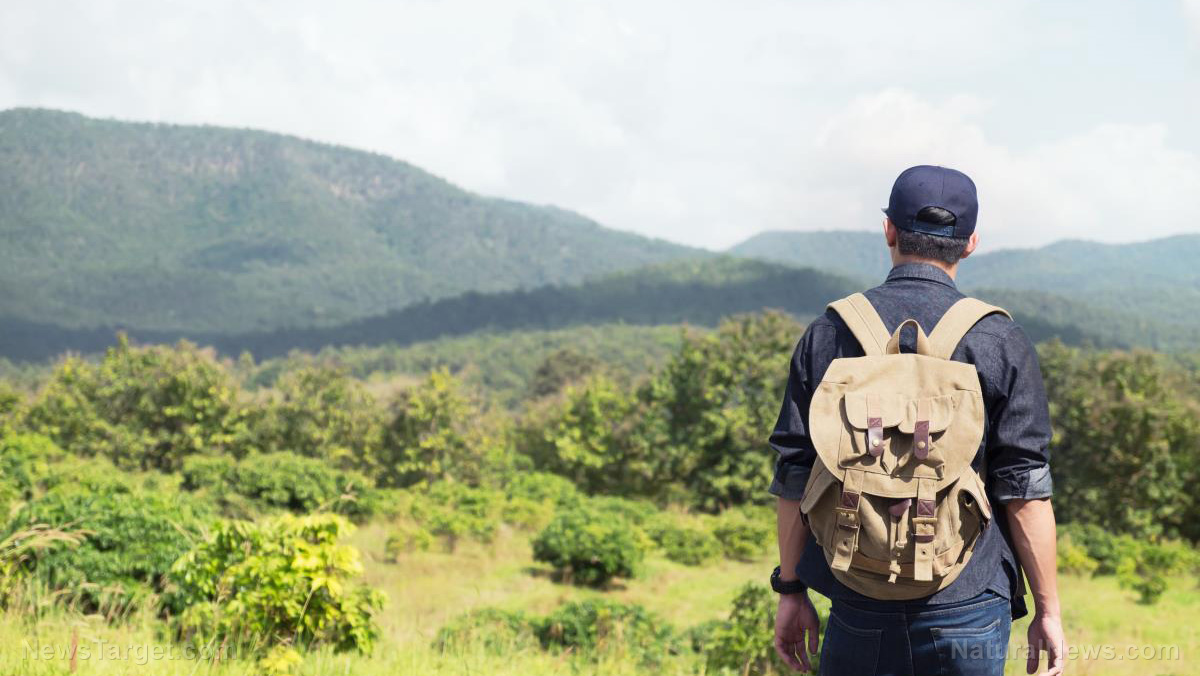Fit and ready: Self-defense tips for preppers
06/29/2019 / By Zoey Sky

If you’re worried about your personal safety every time you leave your house, be proactive and learn self-defense. Staying fit and undergoing combat training can also teach you techniques that you can use to protect yourself if you need to confront an attacker. (h/t to ReadyNutrition.com)
Situational awareness’ crucial role in self-defense
The first step to learning how to defend yourself is developing your situational awareness. This skill can be learned at home, and it will help improve your ability to identify potential threats and strategic thinking skills, as well as raise awareness of your surroundings.
With enough practice, you can train your brain to identify mental cues that will help you analyze situations or problems.
Preppers hone their situational awareness to identify and avoid dangerous situations. When SHTF, preppers can rely on situational awareness to help them quickly analyze the problem and think of effective and practical solutions for survival scenarios.
You may not realize it at the time, but you use situational awareness in common scenarios like while you’re driving and paying attention to the other cars around your vehicle. Aside from driving, you’re also keeping an eye out for road hazards and traffic.
As a prepper, you need situational awareness to make quick decisions when SHTF and every second counts.
Make it a habit to observe other people and details like:
- People acting strangely
- Possible escape routes
- Potential weapons
Don’t get distracted and pay attention to what’s going on around you. This allows you to think ahead so you can identify potential threats and determine how to avoid them. When in a public area, like a restaurant, choose a table near the entrance. If anything happens while you’re inside, you can easily escape the premises.
Mother Nature's micronutrient secret: Organic Broccoli Sprout Capsules now available, delivering 280mg of high-density nutrition, including the extraordinary "sulforaphane" and "glucosinolate" nutrients found only in cruciferous healing foods. Every lot laboratory tested. See availability here.
Fitness and combat training
The second step to learning self-defense is a combination of physical fitness and combat training. Maintaining a healthy weight can give you the edge you need, especially since you’ll be faster on your feet if you exercise regularly.
You should also train your body to react to any dangerous situations that you may find yourself in.
You can undergo combat training in your own home, provided you have a sturdy canvas or leather punching bag (heavy bag). The punching bag must come with a strong chain and a swivel mount.
Get a bag that’s about 45 to 75 pounds. As your punches get stronger, move on to a bag that’s 100 pounds or heavier. You also need a set of hand wraps and a sturdy set of bag gloves or full-sized boxing gloves of 10 or 12 ounces. Your gear will protect your knuckles, the bones in your hand (metacarpals), and your wrists. Always wear proper gear during combat training.
Practice the standard punches of a jab, then follow it up with the “haymaker,” or a strong punch from your dominant hand.
Last, make or purchase anatomically-correct charts that mark effective striking points on your attacker’s musculature and the nervous system. These laminated charts are usually four feet long and three feet wide.
Making your own chart
To make your own chart, you’ll need blue or red plastic sheets that can be stuck to windows or a smooth surface (like a refrigerator) from the hardware store or a crafts/fabric store. These sheets will also work on the laminated poster.
Steps:
- Cut the plastic into several small dime- or quarter-sized circles. Use blue or red plastic for the eyes.
- Take three or four pieces then number them using a permanent marker.
- Check references online to determine the best striking points and pressure points in martial arts. Print these out, then take note of combinations and their locations. (Related: Best Martial Arts For Self Defense.)
- Mark these locations in order of where you’ll be striking with the circles, then stick the circles to the chart.
- Put the chart near the punching bag. When you’re ready to start training, look at the chart then strike the bag.
- Keep practicing until the order and locations become a reflex for you and you commit the combination to “muscle memory,” or your ability to “execute the task at hand without thinking about it in depth.”
You can personalize the punching bag, so it looks more like a person by attaching legs made from stuffed cotton or linen bags. Mount the stuffed bags to the bottom of your punching bag. Mount a jacket or trench coat to the top of the punching bag then stuff the sleeves to form arms.
When you hit the bag, don’t hit it at full speed. Instead, practice your hand speed and the coordination of parts you’ll strike. Hitting too hard can detach the stuffed arms and legs attached to the punching bag.
You’re not training for full-force execution of the combinations. Familiarize yourself with the punches and combinations until you can go through the whole mechanics by reflex alone. Once you’ve memorized the striking points and the combinations, remove the attached “arms” and “legs” so you can hit the punching bag at full force as you train.
Practice situational awareness, maintain a healthy weight and train daily to improve your self-defense skills.
Sources include:
Tagged Under: combat training, defensive tactics, fitness, hand-to-hand combat, haymaker, how-to, physical activity, preparedness, preparedness and survival, prepper, prepping, pressure point drills, pressure points, punches, punching bags, self-defense, SHTF, situational awareness, survival, survival skills
RECENT NEWS & ARTICLES
COPYRIGHT © 2017 · SURVIVAL NEWS



















